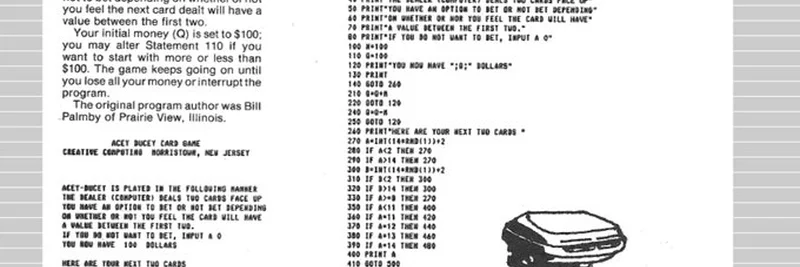Hey there, tech enthusiasts! If you’ve ever wondered how some of the greatest minds in programming got their start, you’re in for a treat. A recent post on X by @_hrkrshnn highlights an inspiring story about John Carmack, the legendary game developer behind classics like Doom and Quake. It turns out Carmack learned to code by copying and pasting video game code written in Microsoft BASIC from a library book onto his computer. The image attached to the post shows a fascinating snapshot of that era—a page from a book featuring the "Acey Ducey" card game code, complete with a quirky robot drawing.
The Old-School Way of Learning to Code
Back in the day, coding wasn’t as accessible as it is now. Aspiring programmers like Carmack relied on physical books, typewriters, and early computers to hone their skills. The "Acey Ducey" code, a simple card game simulation, is a perfect example. Written in BASIC, a beginner-friendly programming language, it allowed users to bet on whether the next card would fall between two dealt cards. This hands-on approach meant debugging typos and understanding logic the hard way—skills that shaped Carmack into the innovator we know today.
This method wasn’t just about copying code; it was about curiosity and persistence. Every mistake was a lesson, and every successful run was a victory. It’s a stark contrast to today’s world, where tools and resources are at our fingertips.
Modern Tools: Enter Claude Code
Fast forward to 2025, and the X post raises an intriguing question: how will kids learn coding today with tools like Claude Code? Claude Code is an AI-powered coding assistant that lives in your terminal, understands your codebase, and helps with tasks like explaining complex code or managing git workflows. It’s a game-changer for blockchain practitioners and meme token developers who need to stay ahead in a fast-evolving tech landscape.
While these tools make learning easier, they also spark a debate. As @unicodef1wn points out in the thread, the convenience might reduce the enthusiasm and curiosity that drove past generations. Debugging a typo in a copied BASIC program built character—will AI tools diminish that grit? It’s a valid concern, especially as we see more people dropping projects due to early frustrations.
The Evolution of Coding Education
The journey from BASIC books to AI assistants reflects the broader evolution of coding education. What started as a niche skill has become a global necessity, fostering creativity and problem-solving. Platforms like Code.org and modern languages like Python have democratized access, while AI tools like Claude Code push the boundaries further. For blockchain enthusiasts at Meme Insider, staying updated with these trends is key to building innovative meme tokens and understanding the latest tech news.
Looking ahead, integrating AI and machine learning into education could prepare the next generation for cutting-edge fields. But let’s not forget the roots—Carmack’s story reminds us that the foundation of great coding often lies in hands-on experimentation.
What This Means for Blockchain and Beyond
At Meme Insider, we’re all about bridging the past and future. Whether you’re a blockchain practitioner tinkering with smart contracts or a meme token creator exploring new trends, understanding this evolution can inspire your next project. The blend of old-school grit and modern AI tools might just be the perfect recipe for success in the decentralized world.
So, what do you think? Will AI tools like Claude Code redefine how we learn coding, or should we hold onto the trial-by-fire methods of the past? Drop your thoughts in the comments, and let’s keep the conversation going!



